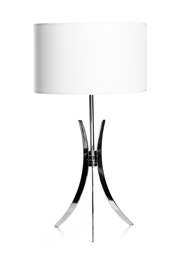The UK government has confirmed that section 52 of the Copyright Designs and Patents Act 1988 will be repealed with effect from 28 July 2016. By this date, businesses that trade in replica goods in reliance on s52 will need to have depleted their stocks and adapted their business model.
Section 52
Section 52 provides that when a work protected by artistic copyright has been exploited industrially (by making and selling more than 50 copies) the copyright term is automatically reduced from the usual life of the author plus 70 years to just 25 years from the date of first marketing. By way of example, an artist creates a painting. As an artistic work, the painting is protected by copyright for the life of the artist plus 70 years. However, if the artist decides to licence the painting to be reproduced on T shirts, 1000 of which are manufactured and sold in the UK, then the duration of protection for the original painting will be reduced to 25 years, running from the end of the year in which the T-shirts were first marketed.
The UK is one of only a handful of EU member states that reduces the term of protection for artistic works when they are exploited industrially. Prompted by an influential ruling of the Court of Justice of the European Union, the UK government felt that s52 was incompatible with the EU Copyright Term Directive and decided to repeal it. Accordingly, from 28 July 2016, all artistic works (whether industrially exploited or not) will have copyright protection for the life of the author plus 70 years.
Repeal
S52 will be repealed by section 74 of the Enterprise and Regulatory Reform Act 2013. Section 74 will be brought into force by the Enterprise and Regulatory Reform Act 2013 (Commencement No. 10 and Saving Provisions) Order 2016. The repeal will not have retrospective effect. Instead, artistic works that have been industrially exploited and are still within the 25 year term, will revert to the usual life plus 70 years term on 28 July. Artistic works whose 25 year term of copyright has expired will resume the remainder of the life plus 70 years term at the point at which the old 25 year term expired. Government guidance gives the following example to illustrate this point:
W created an artistic work in 1980. In the same year, W manufactured 51 copies and sold them. W died in 2010. Under s52, the work would be protected by copyright until 2005 (25 years from 1980). Following repeal, the work will be protected until 2080 (life of the author, running from 2005 to 2010, plus 70 years).

Impact
Authors of artistic works will benefit from the repeal of s52 in terms of a prolonged period of royalty payments. However, any business that currently relies on s52 to copy industrially exploited artistic works when the 25 year term of copyright protection has expired will be adversely affected by the repeal. This could be a business that manufactures and sells replica goods, such as furniture, ceramics, lighting products or jewellery, in the UK. Following the repeal of s52, this will be copyright infringement. These businesses will need to design their own original products or, if they wish to continue copying third party artistic works, seek a licence from the copyright owner or investigate if an exception to copyright applies that they can rely on. In most cases, significant adaptation of their business model will be unavoidable.
Publishers wanting to use industrially exploited photographs or other images in their publications will be similarly impacted.
Transitional arrangements
Following the repeal of s52 on 28 July 2016, new or existing replica products will be infringing copies. Transitional arrangements have been agreed, therefore, to give anyone that has previously relied on s52 time to make adjustments to their business and, in particular, to deplete existing stock. The transitional arrangements are as follows:
- From 28 July 2016, you may not make, or import into the UK, new copies of artistic works unless they were contracted for before 4.30pm on 28 October 2015, in which case you may continue to do this until 27 January 2017 (inclusive);
- From 28 January 2017, you must not deal with any copies of artistic works made in reliance on s52 (eg. sell them). By this date, all copies must be depleted (sold or destroyed).
- From 28 January 2017, copies of artistic works must not be communicated to the public by electronic transmission. For example, images on websites must be removed.
This transitional period is significantly shorter than the five years originally agreed (and subsequently challenged as being excessively long). Businesses that have not yet taken steps to ensure that their business model will fit within a post-repeal copyright regime need to do so now.

